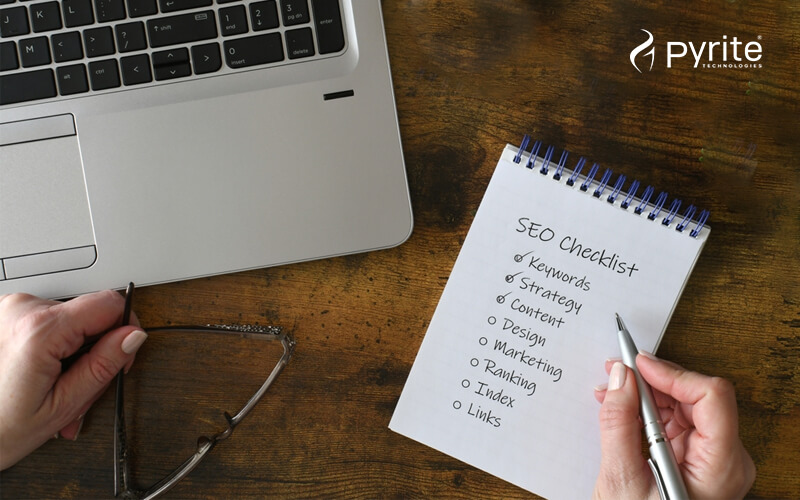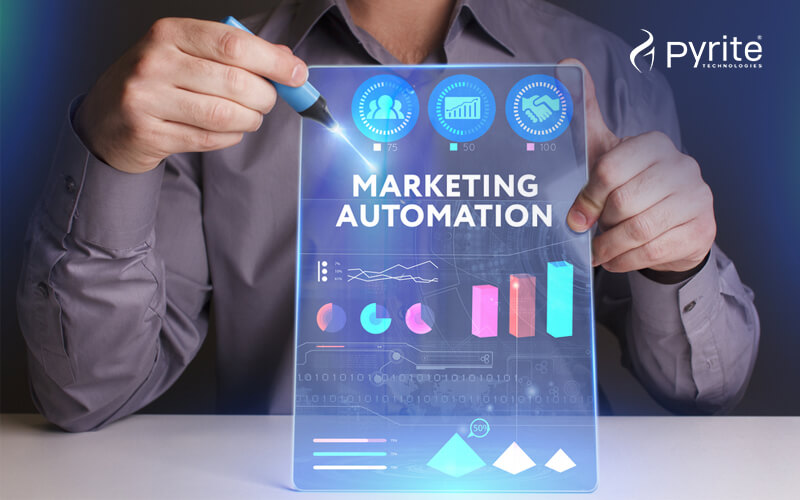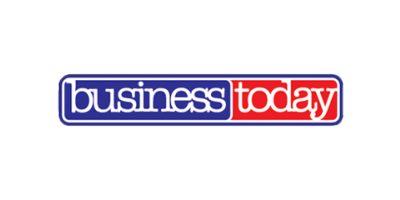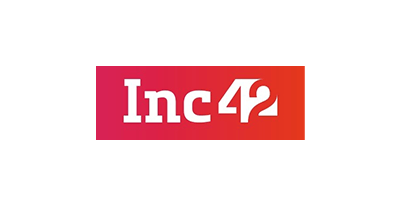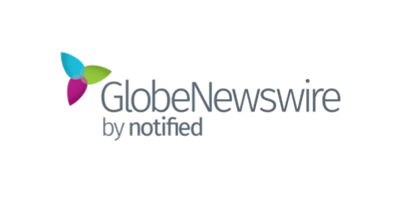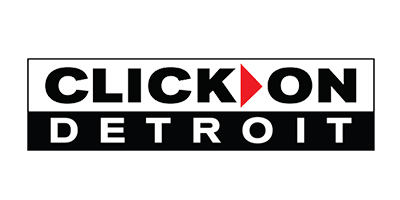
Table of Content
A website landing page should not be mistaken for the homepage. In the realm of digital marketing, landing pages are standalone versions of the complete website serving a singular and more focused purpose. You would want your customers to land up on such curated web pages, with follow-up content comprising required information and a specific offer or action you expect out of your site visitors. The offers can be in the shape of a piece of shareable information or a promise of service in exchange for their contact information. The archaic barter trade approach conceptualizes a typical product landing page or a service-led one where an exchange of services/information and contact details occur over the Internet. Essentially, the landing page is the threshold for website visitors to cross over and become your valued customers.
Crafting a proper landing page need not be a backbreaking task but launching your website without having one can be a grave mistake. You are not only missing out on potential conversions but also letting go of crucial user data. These pages are an inseparable part of search engine optimization services, making them particularly appealing to search algorithms and valuable to searchers.
Evaluating the Effectiveness of Website Landing Pages

An average of 9.7% conversion rate from a landing page across all industries is a good benchmark. They are primarily used for nurturing leads and driving more conversions. With SEO-optimized content for regular search and Google Maps results, these standalone web pages have a higher chance of getting more customers.
Website landing pages are pivotal in the success of a company’s digital marketing strategy, helping to build trust with page visitors and enticing them to share their contact information in exchange for solutions as promised. Obviously, different types of content are curated to capture specific leads and boost conversions from there.
Therefore, drawing new customers and creating prominent revenue channels are essential objectives, and landing pages are orchestrated along the same line.
That being said, an important question deserves an immediate answer: are landing pages mandatory?
Do Landing Pages Matter in Digital Marketing?
The answer to the above question is – yes, they do.
Any enterprise falling under B2B, B2C, or D2C segments can survive without a fully functional website but cannot get business in the absence of a landing page. The approach is, however, different for different industries.
For example, a B2B marketer leverages a product landing page to build a list of prospective customers interested in the exact product/service. At times, the landing pages can be designed to offer valuable information for free, like an ebook or webinar, against the visitors’ contact info.
Contrarily, an organization built around a B2C model leverages such website landing pages for obtaining direct conversions. In ecommerce website development, these landing pages form an integral part of the sales funnel and develop a link between buyers and their online store, right from when they see ad campaigns to their visit to the online stores for closing the deal with a purchase.
Ideally, 10-15 landing pages are capable of increasing conversions by 55%. There’s no science or a Gospel Truth behind the total number of landing pages a business can have. However, it is a fact that over 40 website landing pages have the power to skyrocket conversion rates to approximately 500% or more.
Oli Gardner, founder of Outline and the previous co-founder at Unbounce, once said, “Never. Start. A. Marketing. Campaign. Without. A. Dedicated. Landing. Page.”
Therefore, it has been established that landing pages are inseparable for organizations trying to scale their revenue and client funnel online.
The Right Time to Use a Website Landing Page
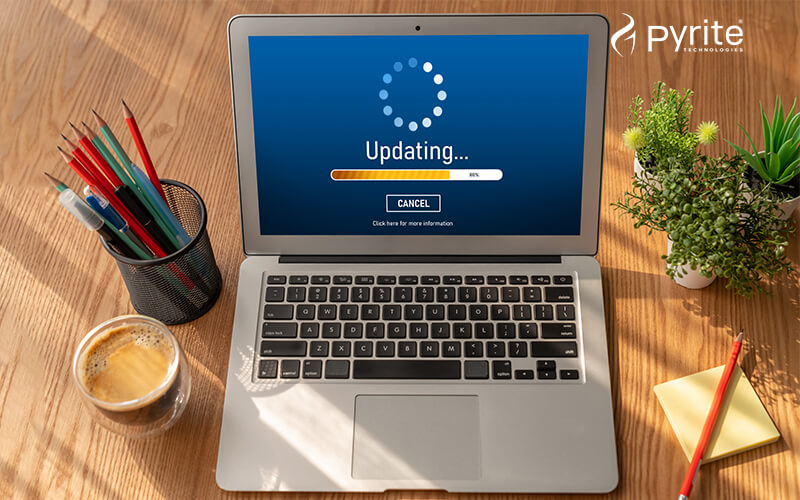
Creative landing page design and content vary per end objective. They can be used to capture user information or capture leads and drive sales simply. Again, landing pages are optimized for paid advertising, serving as an essential lead magnet to reach and attract different audience segments or simply for easier testing.
Today, launching a landing page on the Internet has become more effortless, courtesy of automated landing page-building tools available in the market. The free template designs can generate engaging pages in no time. That’s the easy part. However, copies should be carefully curated to articulate the right message in a tone that effortlessly resonates with the targeted audience.
Therefore, the end objective of the page is paramount so designs and content can be aligned accordingly.
A few such objectives of crafting website landing pages are discussed below:
1. PPC Advertising
The average conversion rate for PPC Ads is 2.35%, whereas the conversion rate for Google Ads is 17%. And landing pages dedicated to the specific ad have higher click-through rates (CTR). Google evaluates the quality of the ad based on the relevance of the linked page, aka the website landing page created for the specific ad. This boosts the ad’s ranking higher in search results. Higher rankings imply more clicks. A dedicated landing page will likely draw more customers interested in the event or product/service offered in the ad. So, conversions, sales, or signups are higher eventually.
2. Lead Magnet
A lead magnet is primarily helpful content followed by a form created for the visitor to come and fill out the required details and gain access to the content. The information collected automatically becomes a valuable lead for the team to follow up. Therefore, a landing page should be designed accordingly using features like informative content, keywords, and a simple lead generation form. The content offered here is usually a whitepaper, ebook, webinar, or limited-service offering.
3. Attract Different Audience Segments
Landing pages are customised to appeal to the search intent of various customer segments. Accordingly, the context of the copy, page style, advertising, offer, and form type are determined to generate a fitting impact on the targeted customer group.
4. Focus Attention
A landing page redirects visitors’ attention to specific content or information. The page’s focus can either be to complete the call to action or return to search results. These pages draw customers from a specific location, demographic, or individual looking at price and quality.
5. Efficient and Faster Testing
As stated earlier, a landing page is a single, standalone page serving a particular purpose, which makes it easier to test. By leveraging the right tools, the page is tested as required to ensure compelling and user-friendly factors are intact. The copy, voice, media, or keywords are generally tested for personalised tone, embedded inputs, and call-to-action (CTA) objectives. Such an approach naturally leads to higher conversion rates.
Benefits of Building Landing Pages for B2B Marketing
The fundamental advantage of owning a website landing page is to capture and convert leads. However, the purpose varies from getting visitor details to getting more PDF downloads. Also, the focus changes based on the business segment. The rules for designing a landing page will eventually vary.
Here are a few benefits of using landing pages for business-to-business (B2B) marketing:
1. Capture and Convert Leads
A landing page is solely dedicated to the conversion of leads. But a regular form with no inducement offer cannot inspire conversions. Also, a generalized form will not support you in tailoring future marketing efforts based on the new lead’s goals or interests. But, when the page objective is clear, and the content and the design follow suit, the end purpose of capturing and converting leads is served.
2. Direct Leads through the Funnel
Landing pages develop leads and redirect them through the sales funnel. They also capture necessary information about their intent through several fill-outs and help redesign future marketing deliverables.
3. Elevate Keyword Rankings
Elevate keyword rankings by generating multiple optimized landing pages for targeted keywords and boost their rankings on search engine results pages.
4. Frequent Testing
Extract quantitative and qualitative insights with split and multivariate testing to ensure the page earns substantial visitors.
Benefits of Building Landing Pages for B2C Websites
Landing pages for business-to-customer (B2C) marketing are designed and curated differently than the B2B marketing ones. The reason is that the end goal varies, as stated earlier. A B2C landing page delivers user-centric experiences to motivate buyers to take the desired action: either purchase or sign up.
The following is a list of reasons why landing pages are important for B2C marketing:
1. Clear Value Proposition:
The landing page is designed to articulate your product or service’s unique value and benefits. This helps visitors decide to prefer your offering over competitors’.
2. Engaging Visuals and Design:
Engaging visuals with apt layouts attract visitors and leave a positive first impression. The design, content, and structure are aesthetically pleasing, easy to navigate, and responsive on various devices.
3. Compelling CTA:
Persuasive CTAs stimulate visitors to take specific action, such as “Buy Now,” “Sign Up,” or “Request a Demo.” The CTA button should be prominent on the page.
4. User-Friendly Experience:
The website landing page should offer a seamless navigation experience. And lead generation forms, if applicable, should be straight-to-the-point without claiming unnecessary information.
5. Social Proof and Testimonials:
Landing pages can provide social proof when customer testimonials, reviews, or case studies are included, building trust and credibility. The positive experiences of previous customers testify to the benefit of your product or service.
6. Trust Signals and Security:
Often, website landing pages display trust badges, security certifications, or affiliations with reputable organizations to confer the trust of your buyers. This helps alleviate concerns about the legitimacy and security of your business.
7. Personalization:
Personalizing the copy helps match the interests or preferences of the visitor when aligned with their behavior or demographic information. This, in turn, enhances the user experience and increases the likelihood of conversion.
Benefits of Building Landing Pages for D2C Websites
The direct-to-customer (D2C) business model targets final users directly. That said, the website landing page requires a different approach than B2B and B2C marketing pages. Keeping the fundamental benefit of such pages in mind, the other advantages are elaborated below:
1. Educate Your Targeted Customers
Landing pages for D2C customers are curated to help them take the desired action through informative and visually appealing content and fitting call-to-action messages.
2. Increase Average Order Values
While pushing the right message across to the right audience, the landing page puts the visitor on the purchase funnel. This increases the average order value eventually for the business.
3. Better Brand Affinity
Landing pages are pivotal to creating an emotional connection with the targeted audience, thereby developing brand loyalty and valuable relationships with customers.
4. Maximise Customer Lifetime Value
Customer lifetime value (CLV) is simply maximising the value your company invests in every buyer. The CLV for each buyer is elevated through landing pages created on targeted buyer personas addressing their pain points.
Types of Website Landing Pages
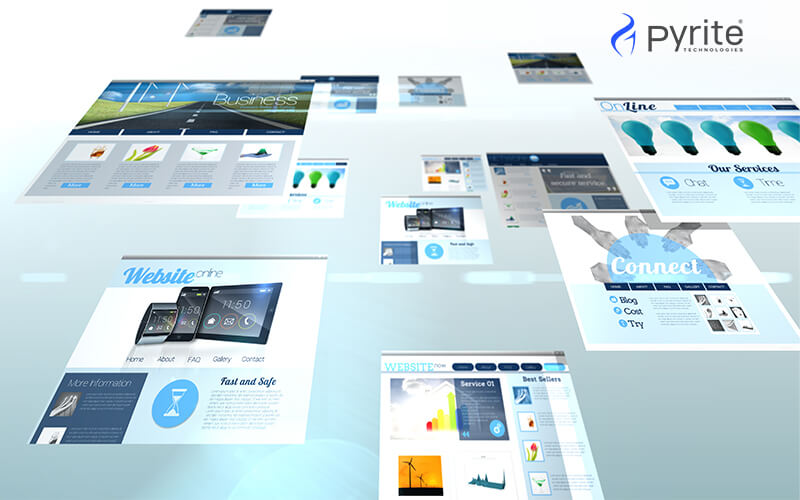
Landing pages are purposeful and leveraged as essential tools to convert more traffic. The pages are developed around a singular goal, and the call-to-action content is curated to drive similar actions from the visitors. With limited navigation and a simple design approach, visitors are more focused on the goal and less distracted by multiple links that divert them from the core context of the page. Usually, generating more site traffic is the first step, but with enticing advertisement copies promoting a single offer, the chances of visitors turning into customers become high.
- Lead capture landing page: A lead capture page captures contact information about your leads, like name, email, phone number, and so on.
- Click-through landing page: web page allows visitors to first land on it when accessing your site. However, this landing page will have no form but one clickable element, also known as the call-to-action button.
- Splash page: These pages promote offers and show warnings or disclaimers regarding sensitive information.
- Squeeze landing page: Use of incentives, FOMO, and other psychological tactics in landing pages simply squeeze or persuade visitors to share their email addresses. And this is the purpose of a squeeze landing page.
- Thank you landing page: This page acknowledges the visitor’s action in subscribing to your service or buying your product, as per the CTA message. It shares a positive experience with visitors and guides them to subsequent steps for further engagement.
- Long-form sales page: Such pages primarily convince buyers to purchase or convert and are usually followed by the thank you landing pages.
- Unsubscribe landing page: This page appears only when a user clicks on the unsubscribe link attached to the email footer. It confirms opt-out action and serves as the last means to retain the buyer in your mailing list.
- Coming Soon landing page: This page guides visitors to learn more about the new website, product/service offering, and a new business line. The purpose is to keep the prospects engaged with your brand.
- Product page: This standalone web page promotes the sales of your product or service. Usually, the page is linked to social media posts, paid ads, or email newsletters.
- Event landing page: This page informs visitors about upcoming events organised by your company and entices them to sign up or register. The event need not be a conference, but the contact information is captured effortlessly via these pages.
- Viral landing pages: These pages promote word of mouth marketing through social networks. The purpose is to get page visitors for signups or other CTAs and tell their network about your brand.
- Microsites: These branded landing pages promote individual products, events, or campaigns and are usually hosted on the company website’s subdomain.
Essential Factors to Consider When Building a Landing Page

A website landing page can serve the end objective only when it is properly created, designed, and articulated as per the end objective. However, certain factors always determine the outcome.
Here are a few essential points to consider before deploying a landing page:
- Determine when to use a landing page
- Decide your campaign goal adequately
- Focus on the offer more, not the company
- Write a clear copy articulating the right message
- Keep the content and the design focused and free of distraction
- Craft your CTA as per the objective of the page
- Ensure the lead generation forms are not intimidating
- The voice should resonate with the targeted audience segment
- Connect your landing page to your domain and customize the URL
- Embed scripts like Google Analytics for tracking visitors and their actions
- Integrate landing pages with automated marketing tools leading to your CRM
- Provide special offers, if any, and create a subsequent thank you page
- Preview the page and run through several tests before deployment
- Continuously test pages and optimize accordingly
A Landing Page Builder – Why Should We Consider One
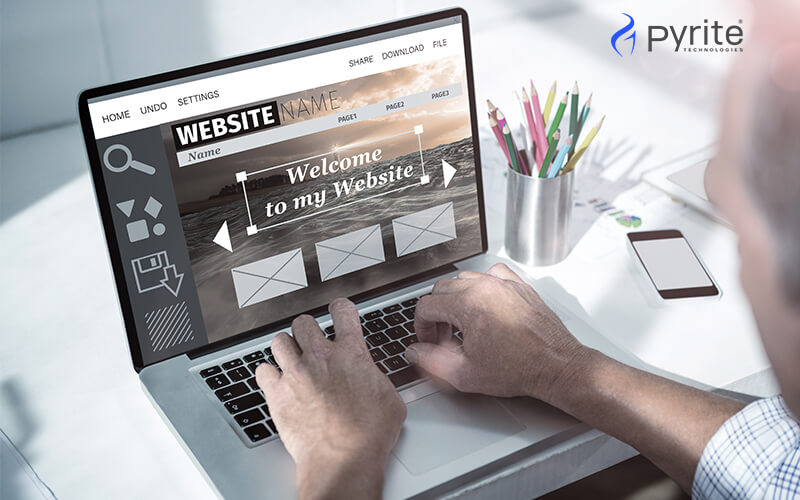
Landing page-building tools are used to generate standalone customized pages swiftly without coding from scratch. They allow easy testing of every element on the page and ensure you get the maximum output from your design and copy.
Landing page builders help launch professional web pages without coding expertise in less than a minute. With embedded templates, you can easily customise to offer a personalised experience to website visitors. Further, the auto-generated pages could quickly be analyzed, tested, and optimized as per requirements to improve the overall performance.
Since the software generally builds pages for lead generation and conversion, they can have numerous benefits for your business.
Benefits of Using a Landing Page Builder
With these numerous software tools, building a product landing page has become a piece of cake. No extra coding knowledge is needed so anyone can create and launch a landing page and start attracting qualified traffic quickly.
- Simple and Easy to Use: Landing page builders are incredibly user-friendly and rarely require prior web design or development expertise. Without adequate knowledge of coding and HTML, you can create your website’s landing page like a pro. The drag-and-drop interface allows easy selection of key elements you want on your page while experimenting with different layouts and designs until you find the best option for your business. The pre-built templates enable you to customise designs and develop a professional-looking page matching your brand’s style.
- Numerous Customization Options: Multiple pre-embedded templates and customization features allow you to maintain a consistent brand image with your landing page. This is paramount when building trust and establishing credibility with your customers. Also, various color schemes, font styles, and layout options provide endless varieties to play around and create the most engaging website landing pages for your business while ensuring a cohesive brand experience for the visitors. You can quickly strengthen the brand’s identity, increase brand recognition, and ultimately develop a stronger connection with the targeted audience.
- Time and Cost Savings: Creating a landing page from scratch is highly time and effort-intensive. Also, outsourcing the designing and development of pages might add to your overall marketing budget if there are no in-house resources. With a landing page builder, these factors do not matter. Easy drag-and-drop interface and pre-embedded templates make the job effortless and quick.
- A/B Testing Capabilities: Obviously, a one-size-fits-all concept doesn’t work for landing pages. Therefore, A/B testing is such a becomes mandatory. A/B testing is also known as split testing, which is a process enabling the creation of two unique versions of a landing page, and then both are tested against each other to evaluate their performance. A helpful landing page builder allows you to create multiple versions of a landing page and try different variables, such as headlines, images, or calls to action.
- Integrated with Other Marketing Tools: The best landing page builders are often integrated with other marketing tools, such as email marketing software, analytics tools, and social media platforms. This integration is vital as it lets your team easily collect data on the page’s performance and optimize for a stellar marketing strategy. Therefore, your marketing efforts are improved and doubled up for maximizing impact.
- Mobile Responsive Designs: A mobile-responsive website and a landing page are crucial for extending your market reach and elevating the site’s visitors’ experience. The top-notch builders for landing pages accommodate mobile-responsive design and layout that automatically adjusts to fit the screen size of the devices, be it a tablet, smartphone, or desktop.
- SEO Optimization Features: SEO is pivotal in any online marketing strategy. And website landing pages for search engines should be optimised to improve the site’s visibility and attract more organic traffic. Many landing page building software have built-in SEO optimization features that generate landing pages suited for search engines. You can add meta tags and descriptions, keywords, and adequate titles to help search engines understand the content and rank the pages accordingly.
- Data and Analytics for Tracking: A landing page builder allows easy tracking and analyzing user data and analytics. These tools offer built-in tracking metrics demonstrating how visitors interact with your landing pages. Such features help identify patterns and trends over time so you can make informed choices about your marketing strategy and adjust tactics accordingly.
16 Best Landing Page Building Tools
You can access a horde of customised templates to build a creative landing page design and launch it in no time with the help of these smart tools. There’s no need to waste time launching your campaigns or losing market opportunities to competitors. All it takes is to sign up for one of these platforms and get your website landing page ready for the launch within a few hours.
Here is a list of 16 best landing page builders to get you started:
| Sl.No | Tool | Pros | Cons | Price | Industries |
|---|---|---|---|---|---|
| 1 | ActiveCampaign | 1. User-friendly interface 2. Easy to integrate with other software 3. Top-notch customer support | 1. Limited customising options 2. Pricey solution compared to other tools in the market | Price ranges from $29 to $149 | Ecommerce, Enterprises |
| 2 | ClickFunnels | 1. Good value for money 2. Incredible customer support 3. Easy and intuitive user interface | 1. Tech support could have been better 2. Not mobile friendly 3. Backend functionality requires a steep learning curve | Free trial available. Basic plan starts from $127/month | Finance, Insurance, Education, Startups, Small and Large Enterprises |
| 3 | HubSpot | 1. Incredible UI and UX 2. Supports a vast app marketplace | 1. Pricey for small businesses 2. Fixed annual contracts require one to make the complete payment even if its usage is terminated early 3. It is best used as all-in-one solution software | Free trial available. Pro plan starts from $18/month | Startups, SMEs, Large Enterprises, Ecommerce. All Industries |
| 4 | Instapage | 1. Offers a good site speed as it is hosted in the cloud 2. It is easy to setup and simple to customise 3. The platform is responsive, flexible, and fast | 1. Pricing is higher than competitors 2. Limited design customisation and flexibility 3. Customer support could have been better | 14-day free trial available. Basic plan starts from $199/month | Ecommerce, Education, Finance, Insurance, Real Estate |
| 5 | Landingi | 1. Offers an intuitive, no-code landing page platform 2. Simple easy-to-use drag and drop editor 3. Very respnsive customer service 4. Easy to clone pages | 1. Pricey compared to other platforms 2. Layout is often non-responsive and require adjustments in different screen sizes | Basic plan starts from $240/year | Marketing and Advertising, Real Estate, Financial Services, Education, Sports and Events |
| 6 | Leadpages | 1. Easy drag-and-drop builder 2. Easy to track performance metrics across all pages 3. Strong knowledge base | 1. Limited native integrations for software like Zoom 2. Difficult to incorporate custom fonts, HTML, and CSS 3. Customer support could have been better | 14-day free trial available. Basic plan starts from $37/month | Enterprises, Ecommerce |
| 7 | Mailchimp | 1. Easy to use 2. Better AI recommendations 3. Good for small businesses 4. Decent reporting tools | 1. Limited advanced features 2. Limited flexibility in design and templates 3. Pricing increases for larger lists | Free plan available, Standard plan starts from $3.51/month | Ecommerce and Other Enterprises |
| 8 | Marketo | 1. Extensive features 2. Good customer support 3. Easy to integrate with existing platforms and software tools | 1. Complex for beginners 2. Expensive tools and features 3. Outdated and complex UI 4. Difficult to customize embedded templates 5. Slow technical and customer support | Price on request | B2B Marketing, Supply Chain, IT Services, NGOs, Consumer Goods, and Others |
| 9 | Optimizely | 1. User-friendly integration 2. Seamless integration with in-house tech stack 3. Easy to setup 4. Offers a full suite of features and tools 5. Excellent technical support | 1. Absence of reusable components for easy iterations 2. Dashboard could have been better | Price on request | Marketing, IT, Enterprises |
| 10 | Pardot | 1. Extensive features 2. Good customer support 3. Convenient integration | 1. Pricey software 2. Requires Salesforce apps for convenient integration 3. Lacks standalone mobile apps 4. No free plan | Default plan – $1,250 USD/company/month. Discounts available for Non-Profits | Non-Profit Organizations, Manufacturing, Healthcare, ONGC, Transportation, Insurance, Retail, Construction, and Others |
| 11 | Shopify | 1. Easy to use 2. Customer support and service is excellent 3. Multiple plugins and customizable features 4. Easy to integrate with different apps and existing tools | 1. Difficult to share catalogs across multiple sites 2. Backend user interface could have been better 3. The platform gets heavy and slow with multiple features | 3-days free trial. Customized plans are available on request | Apparel and Fashion, Retail, Computer Software, Books, Hospitality, and Others |
| 12 | Squarespace | 1. The platform has auto-updates with robust security features 2. Setup is easy and quick 3. Easy to integrate with other tools 4. Mobile responsive interface | 1. Version updates can be tricky 2. Navigation for editing can be difficult 3. Customer service is only via email | Basic plan starts from $16/month. | Fitness, Beauty, Creators, Restaurants, Artists, Photographers, Bloggers, Enterprises |
| 13 | Unbounce | 1. Easy to use intuitive platform 2. Easy to integrate with other tools 3. A powerful and feature-packed platform 4. Delivers good value for money | 1. Poor customer service 2. Basic design templates 3. Heavy and slow performing interface | Basic price starts from $99/month | Ecommerce, SaaS, Agencies, Small Businesses, B2B Marketing, professional Services |
| 14 | Webflow | 1. Live prototyping 2. No plugins 3. Short development time 4. Secured hosting platform 5. Flexible pricing 6. User-friendly interface | 1. Absence of code customisations 2. Webflow doesn’t allow edits from smartphones | Free plan available. Basic plan starts from $14/month | Startups, Enterprises |
| 15 | Wix | 1. Easy to use 2. Simple drag-and-drop interface 3. Affordable pricing compared to other options 4. Incredible customer support | 1. Limited storage in all plans 2. Difficult to change templates after the website is live 3. Google Analytics is not available | Pricing ranges from $0.97 to $6.09/month | Ecommerce, Retail, Fitness, Restaurants |
| 16 | WordPress | 1. Approximately 54,000 mostly free and paid plugins available 2. Over 1000s of mobile-responsive website themes | 1. Frequent technical glitches following platform updates 2. Require more robust security features 3. Certain themes require unnecessary generic code 4. Customization could be expensive | Free plan available. Basic plan starts from rupees 160/month. | IT, Ecommerce Marketplaces, Electronics, ET&S, and Others |
The Final Takeaway
A website landing page should be able to create the first positive impact on your visitors and open floodgates of business opportunities. Therefore, nothing can go wrong with its design or copy. But you do not have to do all the heavy lifting by yourself. You can now build a product landing page within minutes using some of the best tools in the market. They are user-friendly and have a horde of template designs to pick and customise the page to match your brand intent. Sign up today and launch your winning landing page now.

